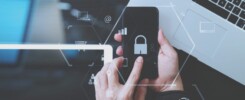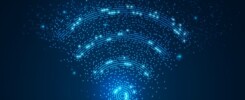You’ve probably heard of the IoT (Internet of Things), but what is the IoB (Internet of Behavior)? Technology and how it relates to the workforce is evolving at a faster pace than ever, and the COVID-19 pandemic has escalated this process considerably.
Remote work, concerns about virus transmission and the need for consistent, corporate-wide abatement procedures are all modern-day realities impacting the way managers, leads and supervisors are able to go about their daily business, and have added a layer of complexity that no one could have predicted.
So how do we define IoB, and how does it work?
Simply put, IoB technology is able to take the data that is gleaned from IoT devices, and make sense of it all in a way that informs and provides feedback that can be translated into actionable steps. More simply put, IoT devices collect data, and IoB tells you what it all means, so you might be able to do something about it.
Devices that utilize location services, facial recognition, usage tracking, etc are collecting data that in itself might be rather meaningless, but when behaviors are correlated with performance, and compliance, the implications become more apparent. Sales and marketing have been taking advantage of AI in order to improve their tactics for years now, so the concept of observing, making extrapolations, and then rewarding the right behaviors is nothing new in the IoT world. How may businesses take advantage of this outside of the marketing department?
Here are some examples.
Compliance.
Are your employees following safety protocols? Location services can track their movements within a facility. Are they running a fever? Thermal imaging may be able to tell. Are they taking the right route to and from facilities? Another example of location services. Are they following the speed limit? Did they arrive on time? How long was their lunch break? Are they wearing their identification or other mandated equipment?
Prediction.
IoB can help employers predict future behavior, by making sense out of the past. Does performance dip every day around 2:30 PM? Are the rates of absenteeism higher the day after the Super Bowl, and if so which “types” of employees are more likely to be absent? What kinds of personality types perform best in different roles? Would a potential employee be a good fit based upon their social media posts?
Evaluation and Performance.
Does providing donuts on Monday morning promote timeliness? Is the new placement of the copy machine increasing employee satisfaction? Is re-routing the path to the bathroom reducing the amount of time staff members spend away from their desks? Are kudos throughout the day able to contribute to more smiling faces for your customers to see?
Now that we have a better understanding of what IoB is, and how it might be used in the workplace, what are some of the risks or drawbacks associated with it? The simple answer would be, “see items, 1, 2, and 3.” but we’d like to be a little more specific
Security and Privacy Concerns.
If data is being recorded, it can be hacked, and if it can be hacked, it can be stolen and used for nefarious purposes. No application, network, or device is 100% secure, and with more data being recorded by more devices and more companies, the more opportunities there are for the bad guys.
Ethical Concerns.
We’d like to think that every company or government agency would use the personal information collected about individuals in a just, fair, and advantageous way. But what critics of IoB are concerned with is the potential for IoB elements to be used against people in discriminatory ways that may vary almost indefinitely.
Practicality and Reliability
Nothing is perfect, and nothing works perfectly. If the data collected is being incorrectly interpreted, or if the data is faulty, chaos can ensue. For example, if an IoT incorrectly records that one of your employees was late, the IoB can then infer that they are at higher risk of being late again, and you can see where that might lead, and the risk only increases as more data is tracked.
IoB is an emerging technology in the workforce, and only time will tell where it leads, but as a manager/supervisor or business owner, it’s good to be aware of this trend, and plan ahead for what it might mean for your organization.
Need some help sorting out how IoT/IoB might benefit your company? We can help!
We’ve partnered with AT&T to bring you the nation’s most powerful, reliable network to power all your business needs and solutions, all in one place.



